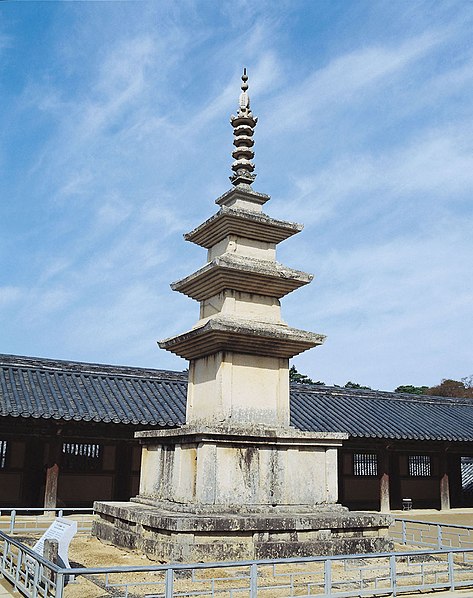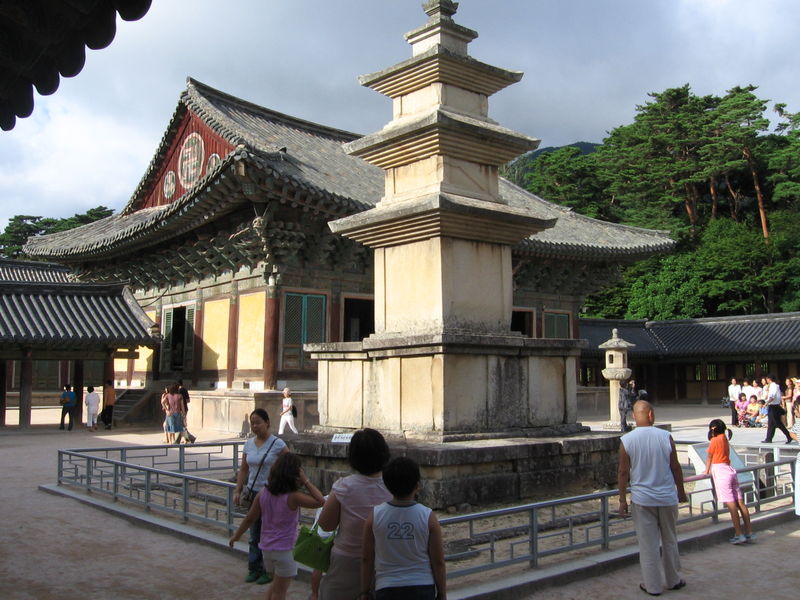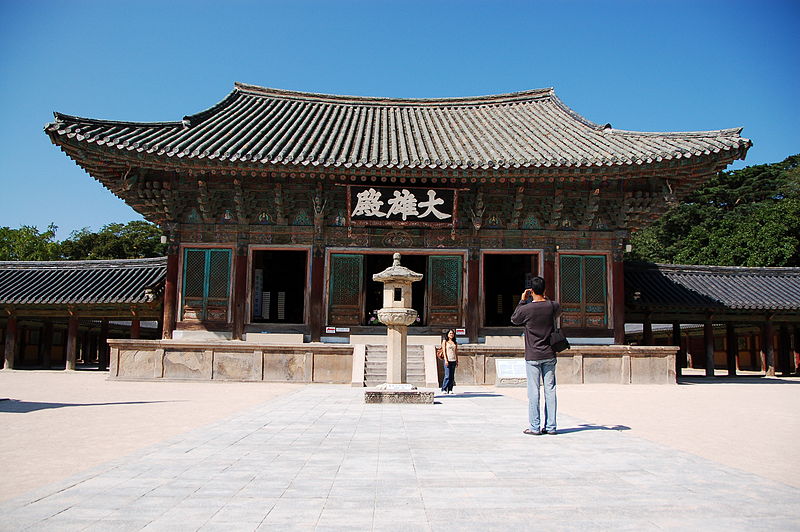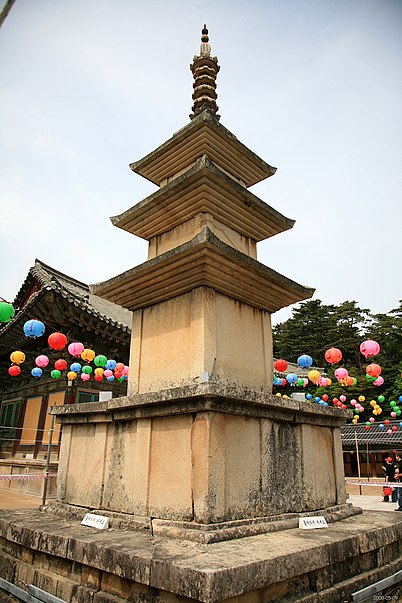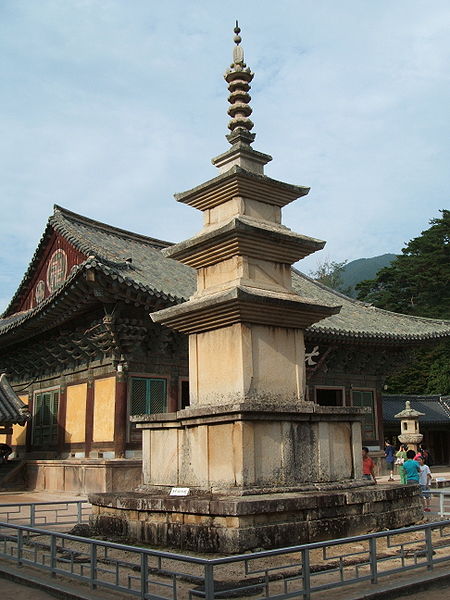Seokgatap, Gyeongju
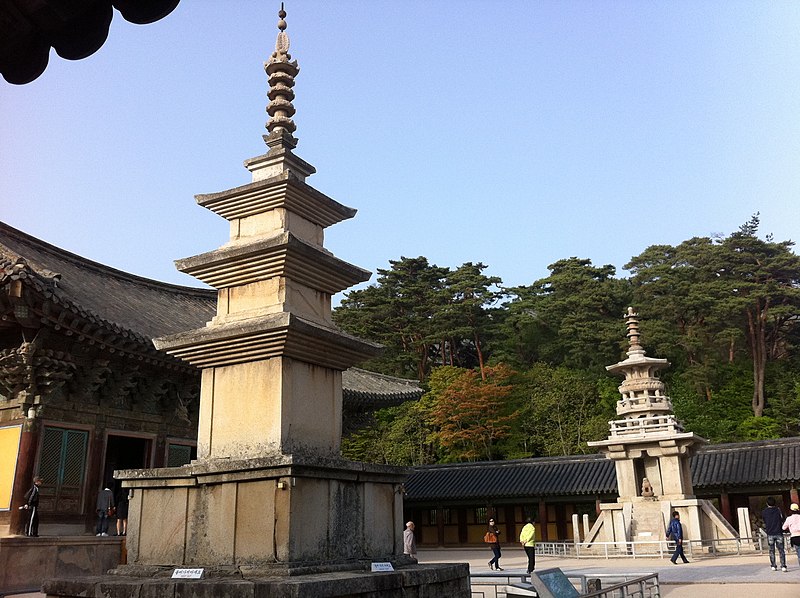
Facts and practical information
Seokgatap, a three-story stone pagoda, stands as an emblem of the ancient city of Gyeongju, South Korea. This historic pagoda, located within the Bulguksa Temple complex, is a testament to the skill and artistry of Silla masons of the 8th century. It is often praised for its simplicity and symmetry, embodying the understated elegance of Unified Silla architecture.
Constructed during the reign of King Gyeongdeok, Seokgatap, also known as the Sakyamuni Pagoda, has weathered centuries and remains a significant cultural landmark. It is one of the two distinct pagodas on the temple grounds, with Dabotap being its more ornate companion. However, Seokgatap is renowned for its balanced proportions and harmonious design, which have earned it recognition as a National Treasure of South Korea.
At a height of 8.2 meters, Seokgatap is considerably smaller than its companion but is admired for its refined and restrained stonework. The pagoda's base is carved with lotus flower designs, and its body is thought to enshrine a relic of the Buddha, making it an important site for Buddhist pilgrims and heritage enthusiasts alike.
Seokgatap's historical significance is further highlighted by its resilience; it has survived numerous invasions and occupations intact. This durability is attributed to its solid construction and the interlocking design of its stones, which did not require the use of mortar.
Gyeongju
Seokgatap – popular in the area (distance from the attraction)
Nearby attractions include: Seokguram, Dabotap, Bulguksa, Silla Arts and Science Museum.


